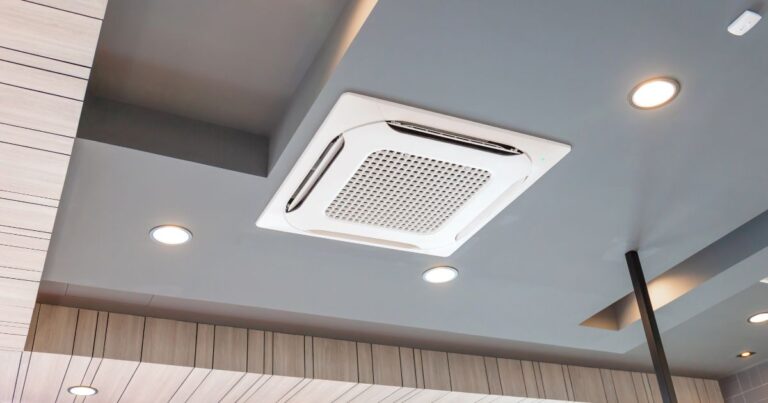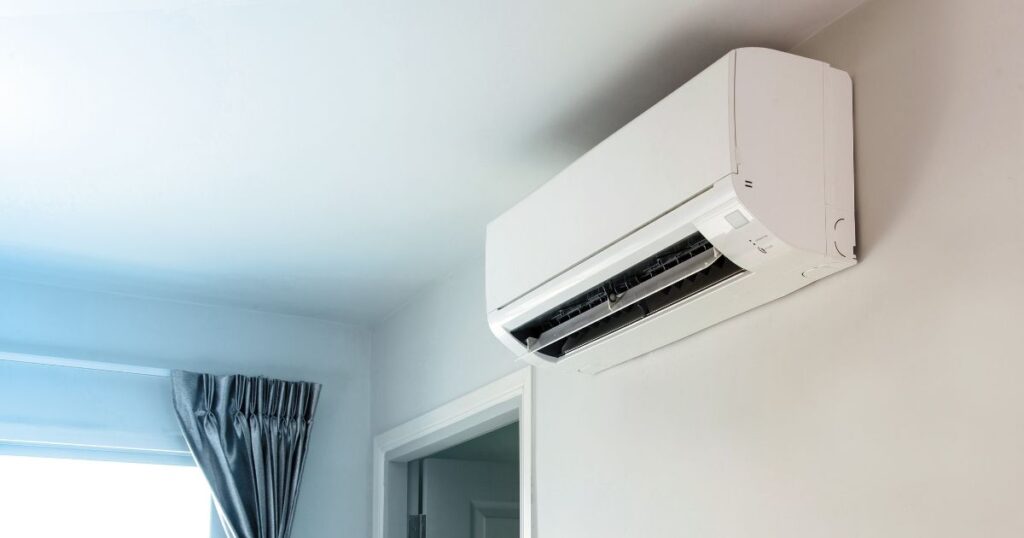
Table of Contents
ToggleThe question of what air conditioning system to install in your home or business often comes down to one issue – which is better, a multi-head split system or a ducted air conditioning system?
Both have their unique advantages and disadvantages, and the best choice depends on your specific needs, preferences, and the type of property you reside in. Here are some insights on how each system works and the pros and cons, so you can make the right choice for your property and your budget.
First, however, let’s get clear on the differences between multi-head split, split, and ducted AC systems.
Split systems, as the name suggests, are made up of two separate components—the heat exchanger unit that blows cool air into your room and the condenser, which is located on the outside of the building. A multi-head split system runs multiple indoor units from one single outdoor unit, allowing it to cool or heat multiple rooms without you having to install an external unit for each internal unit.
A ducted system uses a central unit, hidden within roof spaces or walls, that sends cooled or heated air through ductwork to vents throughout a building, providing consistent and controlled climate across all connected areas.
People often compare ducted and multi-head split systems because they both serve as efficient solutions for cooling multiple rooms or entire buildings. The choice between them typically hinges on factors like installation feasibility, aesthetic preferences, energy efficiency, cost, and the specific cooling needs of a space.
Now that we’ve cleared that up, let’s go over the pros and cons of ducted and multi-head split systems.
Other than the aesthetic benefits of not needing multiple external units on your exterior walls, multi-head systems provide the ability to control the temperature in each room independently. This feature allows for individualised comfort and is particularly useful in households or offices because it caters effectively for different cooling preferences, as well as allowing you to save energy and reduce wastage by only cooling spaces that are being used.
The biggest advantage of multi-head split systems is that they are easy to install in any type of property, including buildings that have low ceilings or limited roof space, because all they require is wall space for the internal and external units.
This simplicity not only speeds up the installation process but also reduces the overall disruption to the property, making it a convenient option for many homeowners and businesses. The installation of multi-head split is less invasive and often more cost-effective compared to ducted cooling systems, which may require more significant work in the roof space.

One of the primary drawbacks of multi-head split systems is the higher initial investment compared to single split systems. Multi-head split systems are usually more expensive to buy and install than a single split system, because you’re purchasing multiple ‘head’ units for each room.
Another drawback is that you will have an internal unit in each room where you want cooling, which can create a cosmetic or space issue. However, most modern multi-head split systems are designed to be compact as well as attractive.
Installing a multi-head split system typically requires professional assessment and installation to ensure optimal efficiency and aesthetics. Our professional installers can evaluate your property’s specific needs and design a system that integrates seamlessly with your home’s layout and cooling requirements, using the latest technology to match your lifestyle and design preferences. This process, while beneficial, adds to the overall cost and complexity of installation.
A huge upside of the ducted system is that it is usually completely hidden from view, with units installed in the roof space or a hidden area against your external wall. The cooled air is sent through ducts in your roof to unobtrusive vents that open into each room, cooling your entire space effectively without impacting on the space or aesthetics of the room.
This discreet installation preserves the aesthetic integrity of your interiors and maximises usable space without the intrusion and noise of visible internal units.
Ducted systems excel in providing a consistent and even distribution of air through ducts to vents strategically placed in each room, ensuring a comfortable and uniform temperature throughout your property. This seamless integration of temperature control is ideal for maintaining a pleasant environment in all area.
You can also create different cooling zones to customise your home’s cooling, creating different temperatures for different rooms. This saves you money by reducing wastage, ensuring you aren’t cooling rooms that are not being used.
If you want your entire home or office building cooled consistently and constantly through the summer as well as the ability to control and customise cooling through smart technology, ducted systems are the most cost-effective answer.
Many modern ducted systems can be used all year round, reversing their cooling technology to warm rooms in winter. This adaptability makes ducted air conditioning an excellent choice for comprehensive climate control throughout the year in any setting, be it residential or commercial.
The initial installation of ducted air conditioning systems tends to be higher than that of simpler systems due to the need for extensive ductwork and professional labour. This complexity can make ducted systems less accessible for smaller properties or those with tighter budgets.
The installation is more extensive because the system requires vents in each room, so the labour costs can be significantly higher than installing a split system. However, these costs can decrease the larger the building is, because the costs of venting to many rooms will be less than the cost of installing multiple separate split air conditioning units or even a multi-head split air conditioning system.
A significant challenge with ducted systems is the substantial roof or attic space required to house the ductwork. If you have low ceilings or a lack of roof space, you probably won’t be able to install a ducted air conditioning system. This requirement can be a major barrier in buildings with limited or low ceiling space, making ducted systems impractical for some structures.
If you are unsure of what system would suit your home or business or want a professional opinion on what brand offers the best value, it’s best to contact our team. At Tailored Heating & Cooling, we’ll use over 30 years of experience to find the best solution for your space.
We support the best brands in the industry and can offer you the latest in high-efficiency, advanced heating and cooling solutions, helping you save energy costs while experiencing Melbourne’s heat waves in complete comfort.
Contact us today for no-obligation advice and heating/cooling assessments for Melbourne homes and businesses.
Step into a world of ultimate comfort and unmatched energy savings with our custom-designed heating and cooling solutions. Take the first step towards a smarter, greener home—request your free, personalised quote today and embrace the Tailored Difference!
Keeping You in the Loop: Our Latest News, Direct to Your Inbox!

At Tailored Solutions, we’re a bunch of forward-thinkers, innovators, and, admittedly, coffee enthusiasts, who believe that a comfortable home is the cornerstone of a happy life.
ARCTick Licence No: ARCTICK AU41000
